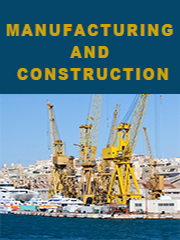Report overview
Level measurement technology is widely used across many sectors such as construction, industrial, manufacturing, oil and gas, among others. Radar level measurement technology is categorized on the basis of type as non-contacting transmitter and a contacting transmitter. Radar level measurement is based on calculation of time required for completion of trip between the transducer and sensed material level. Radar level transmitters are ideally used for harsh environment where dust, vapor, or a foaming surface prevents the usage of ultrasonic measurement. The radar level transmitters are used for liquids, solids, or interface application. Based on the type of radar, further classification can be done as FM-CW radar, guided wave, CW radar, and pulse radar depending on the respective applications. Radar level measurement technology relies on ?echo? signal which is reflected back from the surface. Thus, radar level transmitters provide accurate and reliable results for any liquids and solids under high pressures and temperatures.
This report aims to provide a comprehensive presentation of the global market for Radar Level Transmitters, with both quantitative and qualitative analysis, to help readers develop business/growth strategies, assess the market competitive situation, analyze their position in the current marketplace, and make informed business decisions regarding Radar Level Transmitters. This report contains market size and forecasts of Radar Level Transmitters in global, including the following market information:
Global Radar Level Transmitters Market Revenue, 2018-2023, 2024-2029, ($ millions)
Global Radar Level Transmitters Market Sales, 2018-2023, 2024-2029, (K Units)
Global top five Radar Level Transmitters companies in 2022 (%)
The global Radar Level Transmitters market was valued at US$ 777.9 million in 2022 and is projected to reach US$ 979.7 million by 2029, at a CAGR of 3.3% during the forecast period. The influence of COVID-19 and the Russia-Ukraine War were considered while estimating market sizes.
Global Radar Level Transmitters key players include Emerson Electric, ABB, Siemens AG, Honeywell, VEGA Grieshaber KG, etc. Global top five manufacturers hold a share over 40%.
North America is the largest market, with a share over 30%, followed by Europe, and Asia-Pacific, both have a share about 55 percent.
In terms of product, Non-Contact is the largest segment, with a share over 55%. And in terms of application, the largest application is Chemicals, followed by Oil and Gas, Power Generation, Food and Beverage, etc.
We surveyed the Radar Level Transmitters manufacturers, suppliers, distributors and industry experts on this industry, involving the sales, revenue, demand, price change, product type, recent development and plan, industry trends, drivers, challenges, obstacles, and potential risks.
Total Market by Segment:
Global Radar Level Transmitters Market, by Type, 2018-2023, 2024-2029 ($ Millions) & (K Units)
Global Radar Level Transmitters Market Segment Percentages, by Type, 2022 (%)
Non-contact Radar Level Transmitter
Guided Wave Radar Level Transmitter
Global Radar Level Transmitters Market, by Application, 2018-2023, 2024-2029 ($ Millions) & (K Units)
Global Radar Level Transmitters Market Segment Percentages, by Application, 2022 (%)
Oil and Gas
Pharmaceutical and Biotech
Power Generation
Chemical
Food and Beverage
Other
Global Radar Level Transmitters Market, By Region and Country, 2018-2023, 2024-2029 ($ Millions) & (K Units)
Global Radar Level Transmitters Market Segment Percentages, By Region and Country, 2022 (%)
North America
US
Canada
Mexico
Europe
Germany
France
U.K.
Italy
Russia
Nordic Countries
Benelux
Rest of Europe
Asia
China
Japan
South Korea
Southeast Asia
India
Rest of Asia
South America
Brazil
Argentina
Rest of South America
Middle East & Africa
Turkey
Israel
Saudi Arabia
UAE
Rest of Middle East & Africa
Competitor Analysis
The report also provides analysis of leading market participants including:
Key companies Radar Level Transmitters revenues in global market, 2018-2023 (Estimated), ($ millions)
Key companies Radar Level Transmitters revenues share in global market, 2022 (%)
Key companies Radar Level Transmitters sales in global market, 2018-2023 (Estimated), (K Units)
Key companies Radar Level Transmitters sales share in global market, 2022 (%)
Further, the report presents profiles of competitors in the market, key players include:
ABB
Emerson Electric
Siemens AG
Schneider Electric
Magnetrol International
VEGA Grieshaber KG
Yokogawa Electric
OMEGA Engineering
Honeywell
KROHNE
Matsushima Measure Tech Co., Ltd.
Dandong Top Electronics Instrument Group Co. Ltd
E+H
Outline of Major Chapters:
Chapter 1: Introduces the definition of Radar Level Transmitters, market overview.
Chapter 2: Global Radar Level Transmitters market size in revenue and volume.
Chapter 3: Detailed analysis of Radar Level Transmitters manufacturers competitive landscape, price, sales and revenue market share, latest development plan, merger, and acquisition information, etc.
Chapter 4: Provides the analysis of various market segments by type, covering the market size and development potential of each market segment, to help readers find the blue ocean market in different market segments.
Chapter 5: Provides the analysis of various market segments by application, covering the market size and development potential of each market segment, to help readers find the blue ocean market in different downstream markets.
Chapter 6: Sales of Radar Level Transmitters in regional level and country level. It provides a quantitative analysis of the market size and development potential of each region and its main countries and introduces the market development, future development prospects, market space of each country in the world.
Chapter 7: Provides profiles of key players, introducing the basic situation of the main companies in the market in detail, including product sales, revenue, price, gross margin, product introduction, recent development, etc.
Chapter 8: Global Radar Level Transmitters capacity by region & country.
Chapter 9: Introduces the market dynamics, latest developments of the market, the driving factors and restrictive factors of the market, the challenges and risks faced by manufacturers in the industry, and the analysis of relevant policies in the industry.
Chapter 10: Analysis of industrial chain, including the upstream and downstream of the industry.
Chapter 11: The main points and conclusions of the report.
